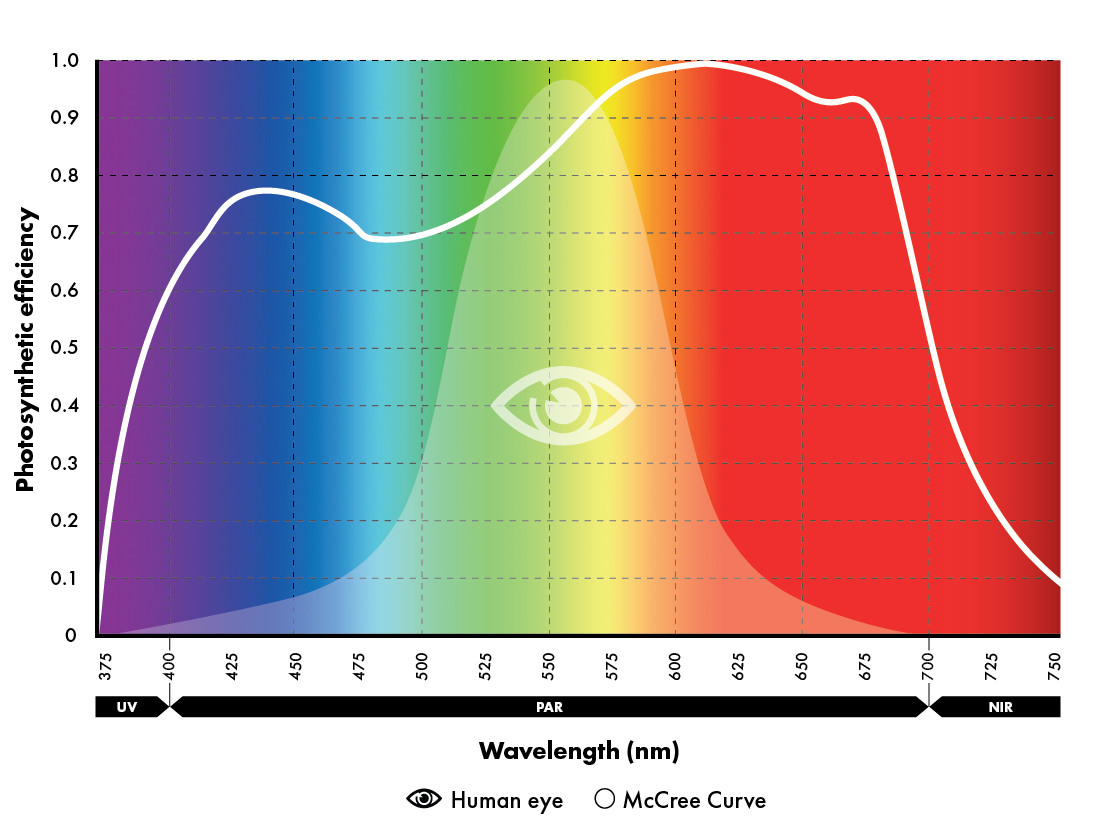The colour of light is important
The colour of light affects the efficiency of photosynthesis but also growth and development. It is becoming more and more possible to work with these facts.
Many led-lights contain red, blue and far-red led’s. This easily gives the impression that these are the most ideal colours for plant growth and development. But this requires a clear explanation. When it comes to light colour it is necessary to distinguish between two things: the influence of colour on photosynthesis and its influence on development.
With respect to led’s, red produces the most light output per kW electricity. This is the reason that this colour is dominant in the fixtures. Because a plant cannot grow with purely red light, blue and sometimes far red light are also added. But plants do utilise the other light colours quite well. This is shown in the McCree curve: there are peaks in red and blue but photosynthesis is certainly not zero in the other colours.
Currently it is already possible for leafy crops and some types of green pot plants to be grown under led-light. That is still “out of reach” for flowering ornamental plants.
Still, all crops grow better under sunlight which, the full colour spectrum, Trials have shown this time and time again.
Sunlight consists of UV, PAR (photosynthetically active radiation) and infrared. As the name implies, only PAR is important for growth. Half of the solar energy is in the infrared part of the spectrum and it is this which contributes an important part to heating the greenhouse. Because it is not needed for photosynthesis, shading out infrared (heat radiation) is a good idea. Suitable coatings for this are ReduHeat and ReduFuse IR.

Light colour determines development
The colour of the light also determines the development of the crop: the amount of elongation, how much it branches, when it flowers etc. The intensity of light is very important for photosynthesis but for steering the development of the crop a much minor light differences can already be enough. For example a very small amount of red light during a long night is enough to keep chrysanthemums vegetative.
It is the relationship between the colours that gives light its steering effect. For example, the ratio between red and far red: More red results in more compact plants. The ratio between red and blue is also important. Less blue (and therefore more red) leads to roses with longer stems.
This example shows that it’s not quite that simple: on the one hand more red results in more compactness and in the other more elongation. Keep in mind that it is always about the colour to colour ratio. In practice it is difficult to steer with light colours. After all, there is always an ample amount of sunlight available. In order to change the ratios during the day, you would need to add a lot of the desired light colour. Son-T lamps contain so much red light that at low levels of natural light there is a definite red-light effect.
Extended lighting at dusk (to change the ratio red:far red) can lead to more compact plants, according to research by Wageningen University Research on fuchsias. Rose growers have had good experiences with the coating ReduFlex Blue which partly blocks blue light. They can harvest longer roses under this coating. In this case it is the ratio of red:blue light that causes the effect. There are many interesting developments in the field of light colours, but practical application or applying the results to other crops is still difficult.
Wageningen University & Research has achieved spectacular results with tomatoes under extra far-red light. The plants sent more assimilates to the fruits. It is still unclear whether such results can be applied to ornamental plants, like gerbera or rose.


